
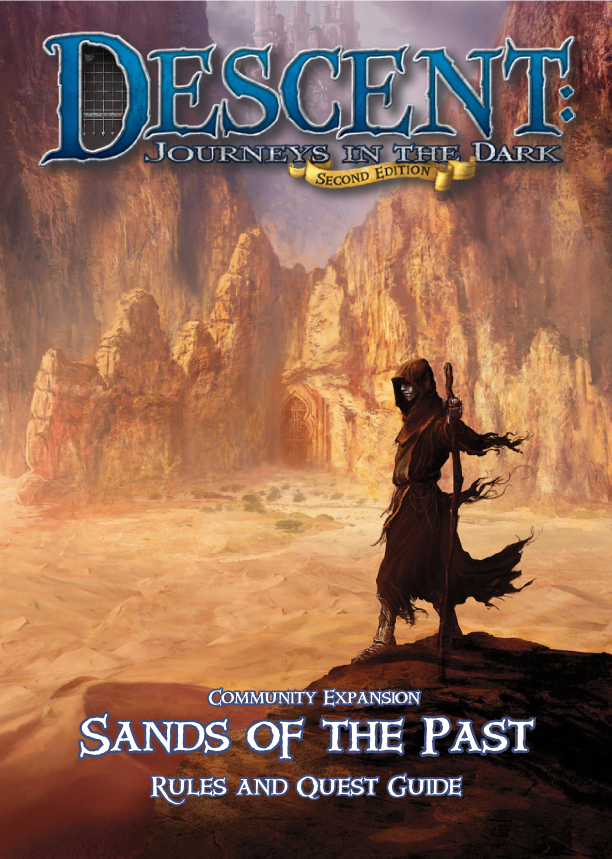
I am happy to present Sands of the Past – an expansion for Descent: Journeys in the Dark 2nd edition. A couple of months ago, myself, Erik Burigo (Painkeeper), and other members of the community set out to develop a community expansion with roughly the content and quality of an official small box expansion.
Sands of the Past makes use of components from the base game and the Labyrinth of Ruin expansion.
Sands of the Past can be played in standard OL vs. heroes mode just like the official small box expansions “Lair of the Wyrm” and “The Trollfens”. It provides 4 new quests that can be played as a mini campaign or integrated into full campaigns using Rumor cards.
Sands of the Past also includes the new Road to Peril system which provides a cooperative mode of play for Descent: Journeys in the Dark Second Edition and its expansions. In Road to Peril 1 to 4 players must work together to overcome the challenges presented to them by a card-driven artificial intelligence. Although no electronic device is needed when playing Road to Peril, it still uses the general rule-set of the Road to Legend app.
Main features of Road to Peril:
- Scale-able difficulty (4 levels: easy, normal, heroic, legendary) with the highest levels still being challenging for experienced players and optimized hero teams.
- Clear, intuitive rules that do not leave any room to cheese things.
- Immersive texts and descriptions.
- Coop components for the “Heirs of Blood” campaign and the new community mini-campaign “Sands of the Past” included.
- High-quality design and layout of all components.
- Thorough play-testing before release.
Components
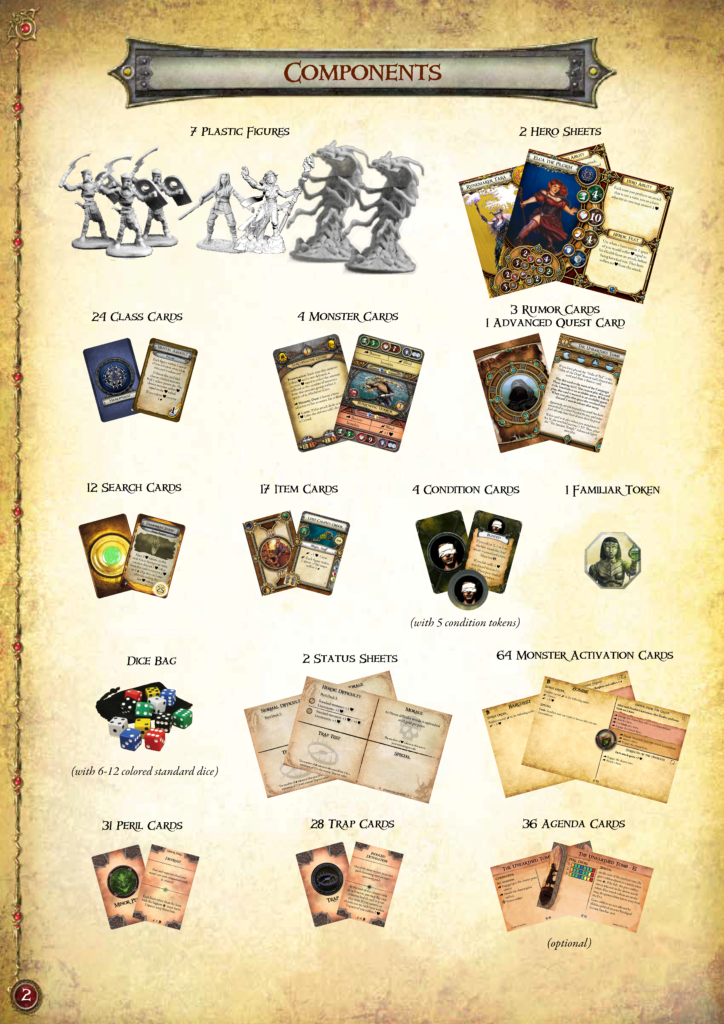
- 2 new heroes: Runemaker Tara (mage) and Elga the Pilgrim (healer)
- 2 new classes: Hierophant (healer) and Psychic (mage)
- 2 new monster groups: Burrowing Horrors and Sarcophagus Guards
- 3 Rumor and 1 Advanced Quest card
- 12 new Search cards
- 17 new items
- 1 new condition: Blinded
- 1 new familiar: the Bandaged Servant
- Rules and Quest Guide with 4 new quests and the rule set for Road to Peril
- 64 Monster Activation cards
- 36 Agenda cards
- 31 Peril cards
- 28 Trap cards
- 2 Status sheets
- 4 Round Summary sheets
Tricks of the Mind
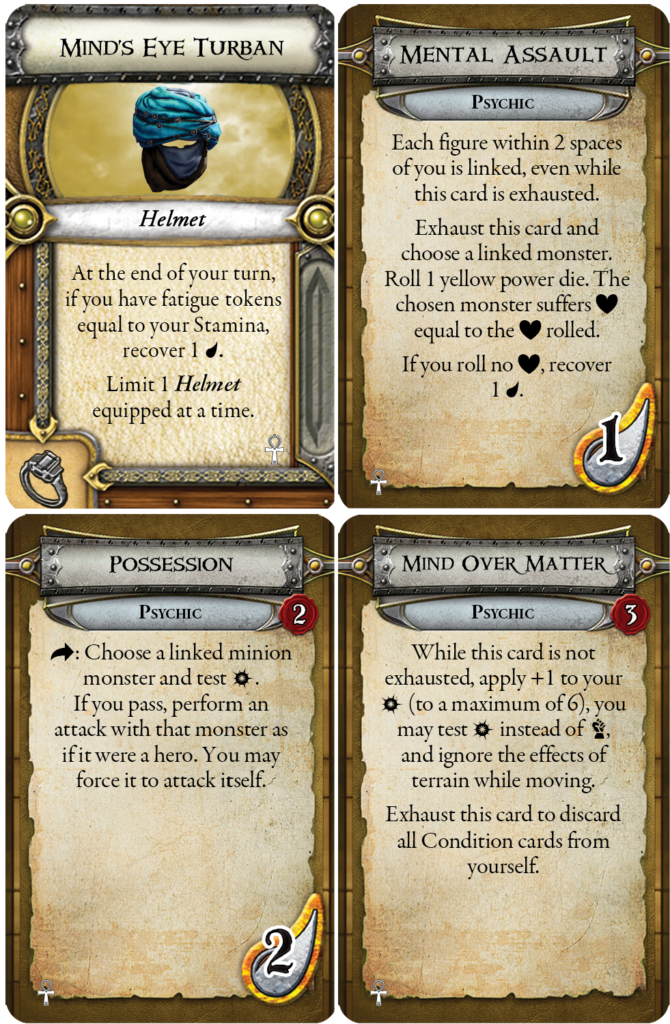
The Psychic is a fatigue heavy mage class, but it includes a few methods of fatigue recovery as well. It plays as an area effect mage which can damage monsters without attacking, assist other heroes and even bend the mind of his enemies to do the work for the heroes. With the help of an additional Skill card, the psychic may increase his aura of influence even more. At later stages, the Psychic’s unsurpassed mental control allows him or her to dominate might-based attribute tests, discard conditions and outright ignore terrain.
This class was originally designed by Zaltyre.
Serve the Gods
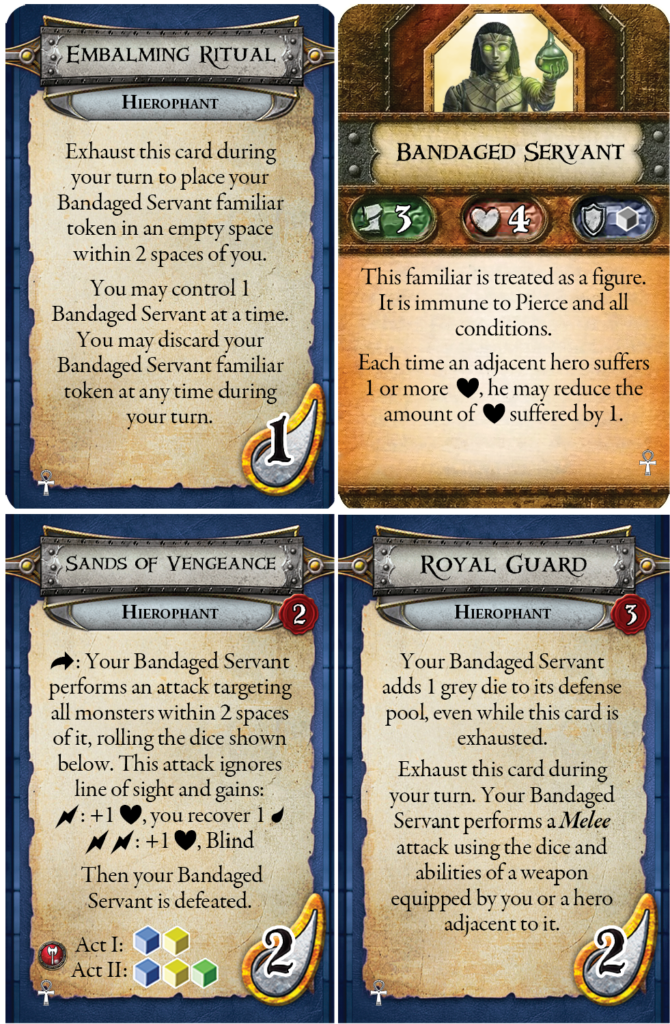
The Hierophant is a high priestess or priest, often an advisor for the Caliph or for another regal figure, but never a lackey of them. Hierophant’s only master is the god she devoted her life to, and in Al-Kalim the deity Atar represents both the life-giving aspect of the sun and its smiting, scorching power.
The Hierophant is an expert of death rites: she can magically embalm and anoint a corpse to serve and protect her and her allies. Unlike most other healers, the Hierophant is not specialized into restoring health, but her damage prevention skills make the lack of healing a minimal setback.
The Bandaged Servant is a mobile bastion that soaks up damage and, as the Hierophant gains new skills, can provide condition dampening and removal, attribute enhancing, dice reroll, fatigue recovery, and additional actions. But if things get dire and someone falls under the assault of your enemies, her promise to serve the Sun is not fulfilled with her demise, and she can bring herself and her companions back from the death’s door.
What Lurks in the Dark …
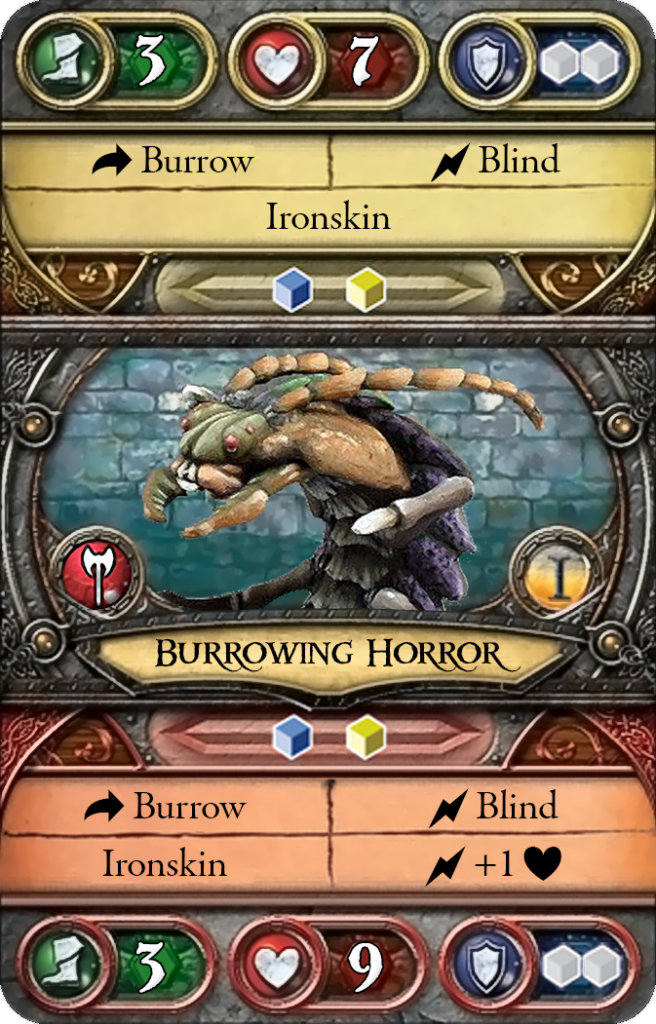
Thought to have died out generations ago, Burrowing Horrors have recently reappeared in the deserts of Al-Kalim. These terrifying arthropods are all covered in a thick chitinous exoskeleton, protecting it against heat and dehydration. Being able to burrow through sand, earth and rock alike, they can easily ambush the unwary from below. Besides mandibles capable of snapping small trees, Burrowing Horrors possess the ability to spit acid into the eyes of their prey.
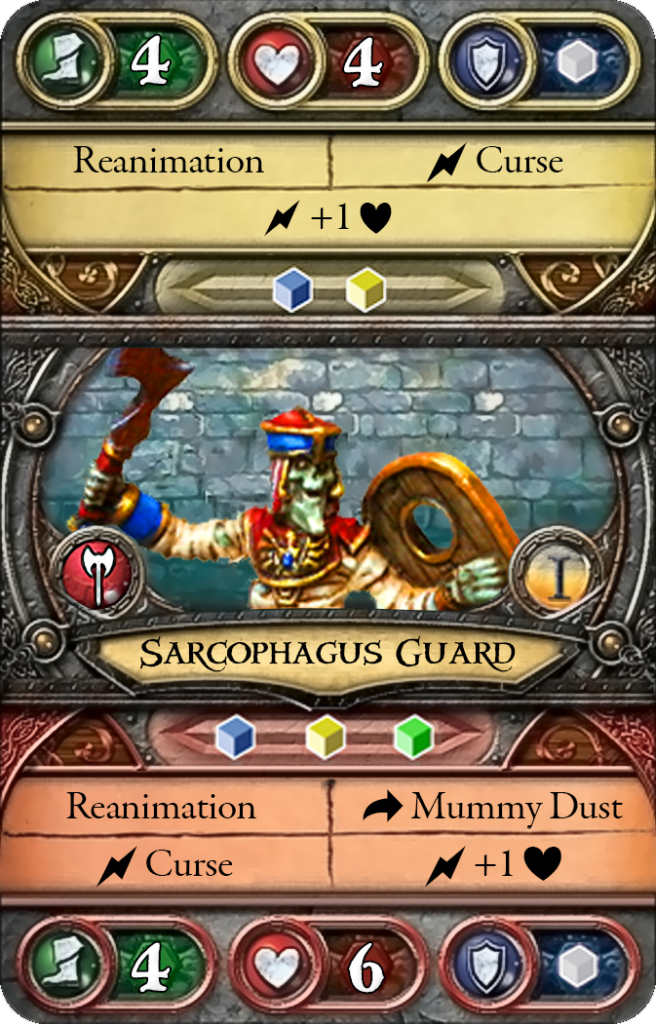
Sarcophagus Guards are former guards of influential nobleman that were sealed within tombs to guard valuable burial objects. Ancient magic not only increased their size and strength but also renders Sarcophagus Guards far sturdier than many other undead creatures. These monsters do not care who disturbed the peace of the burial place that they were meant to protect, and will not cease until whoever is defiling it is put to rest.
A Road Untraveled
Although the overlord himself is not present, he left detailed instructions and imbued his minions with unnatural powers. At the core of Road to Peril two types of cards instruct players how to activate monsters and approach decisions that are usually made by a human overlord.
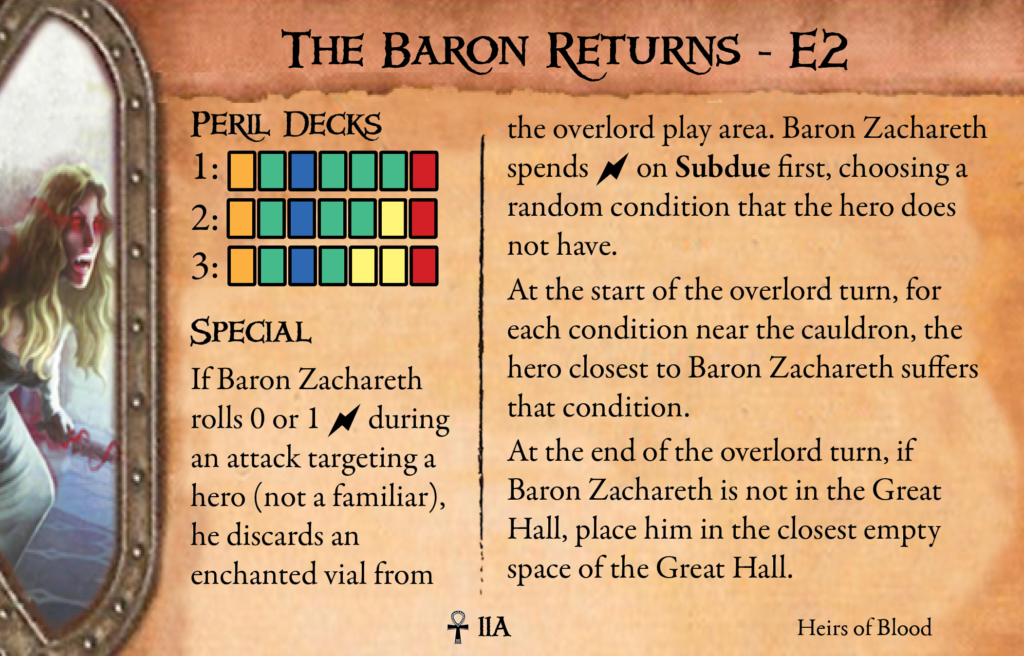
Agenda cards provide encounter-specific information on Peril deck assembly, monster placement and behavior, reinforcements and special quest rules. There is one Agenda card for every individual encounter. The Command section on the back of many Agenda cards can provide encounter-specific action lists for certain monster groups that need to complete special tasks during the encounter.
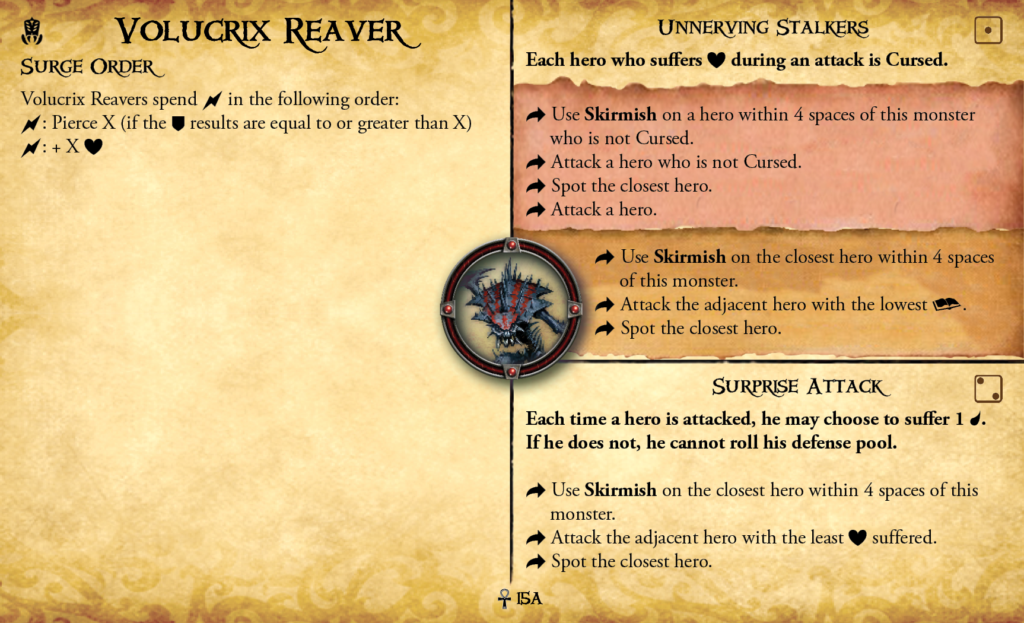
Monster Activation cards show players how to activate all monsters that do not have special tasks to fulfill. Monster Activation cards include activation boxes on front and back that display instructions identical to those used by the Road to Legend app. A monster activation box consists of a special effect and an action list. Each time a monster group activates, players roll a standard six-sided die (D6) to determine which monster activation box is used. Then the special effect is resolved and each monster performs 2 actions from the action list. In addition, Monster Activation cards show information on surge usage, special monster abilities, etc.
Traps and Perils
To make life even harder, two decks of cards provide deadly surprises for the heroes.
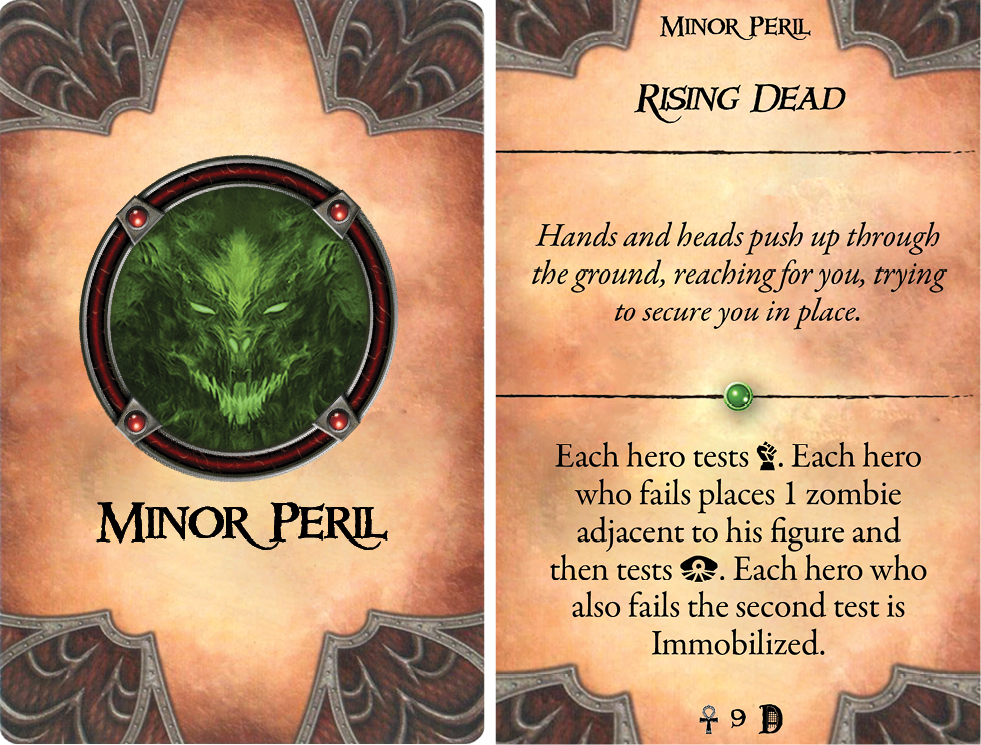
Peril cards display effects the represent the lingering influence of the overlord and special powers of his minions that will take effect every second round. Depending on the difficulty level chosen at the start of the campaign, the Peril deck for the encounter may contain color-coded Minor, Major, Deadly and Quest Perils. At the same time, the Peril deck acts as a timer for the heroes to encourage them to hurry up – when a Deadly Peril is revealed the quest is lost.
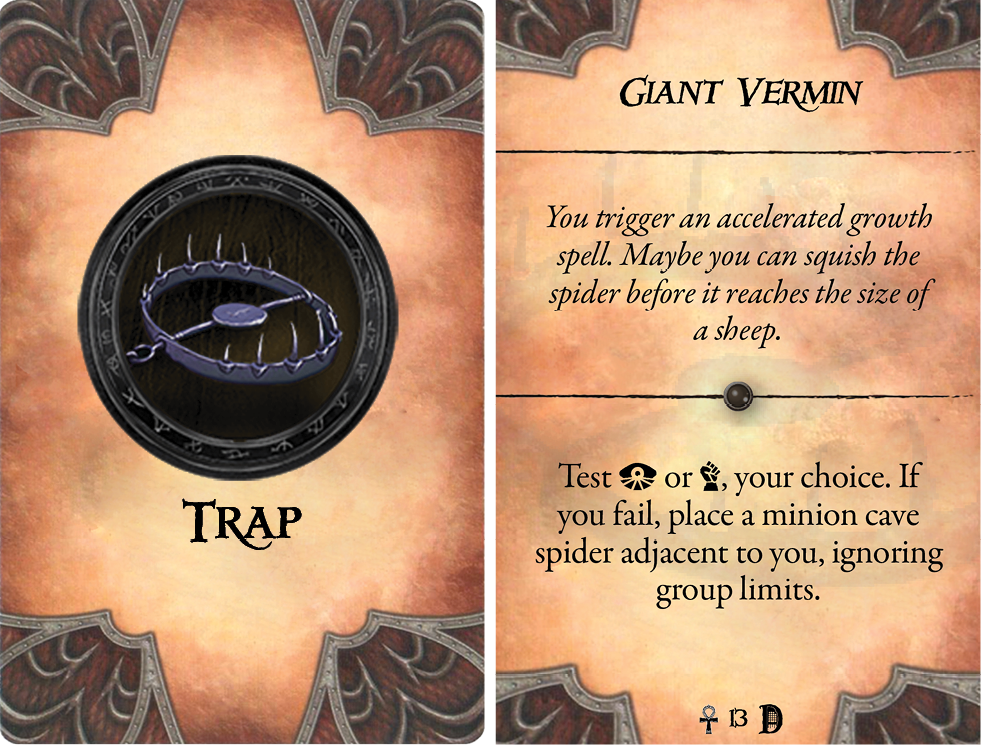
The heroes must be careful when exploring uncharted territory. Trap cards describe carefully laid-out traps of the overlord. Whenever a hero performs a search action to reveal a search token or opens a door, he must test for traps. A trap test is an attribute test against a trap value between 1 and 6, that depends on the success of the heroes during the campaign: Each time the heroes win a quest, the trap value is decreased by 1; each time the overlord wins a quest the trap value is increased by 1. Only if the hero passes the Trap test he or she can successfully neutralize the trap and avoid its effects.